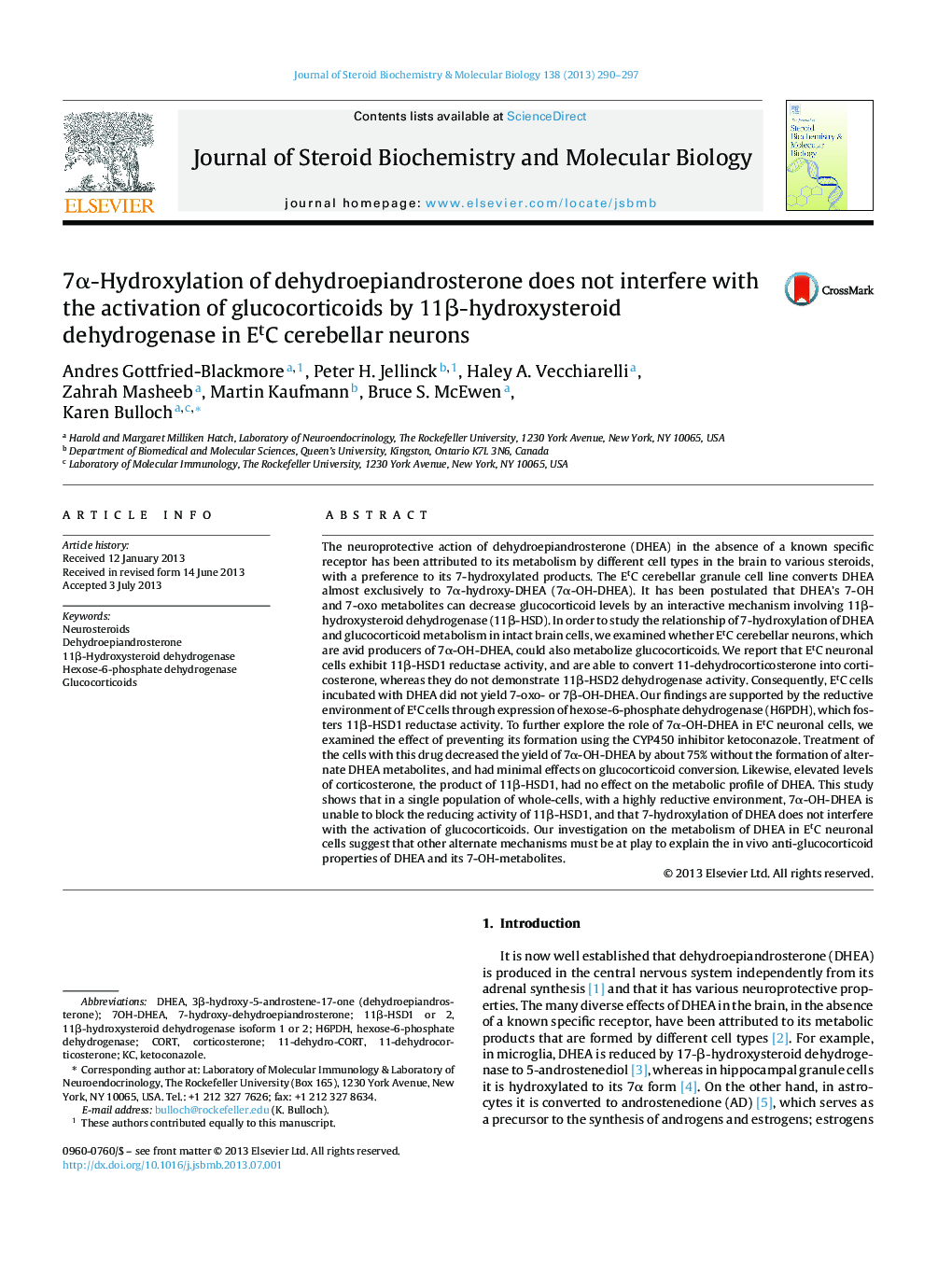| Article ID | Journal | Published Year | Pages | File Type |
|---|---|---|---|---|
| 8339002 | The Journal of Steroid Biochemistry and Molecular Biology | 2013 | 8 Pages |
Abstract
The neuroprotective action of dehydroepiandrosterone (DHEA) in the absence of a known specific receptor has been attributed to its metabolism by different cell types in the brain to various steroids, with a preference to its 7-hydroxylated products. The EtC cerebellar granule cell line converts DHEA almost exclusively to 7α-hydroxy-DHEA (7α-OH-DHEA). It has been postulated that DHEA's 7-OH and 7-oxo metabolites can decrease glucocorticoid levels by an interactive mechanism involving 11β-hydroxysteroid dehydrogenase (11β-HSD). In order to study the relationship of 7-hydroxylation of DHEA and glucocorticoid metabolism in intact brain cells, we examined whether EtC cerebellar neurons, which are avid producers of 7α-OH-DHEA, could also metabolize glucocorticoids. We report that EtC neuronal cells exhibit 11β-HSD1 reductase activity, and are able to convert 11-dehydrocorticosterone into corticosterone, whereas they do not demonstrate 11β-HSD2 dehydrogenase activity. Consequently, EtC cells incubated with DHEA did not yield 7-oxo- or 7β-OH-DHEA. Our findings are supported by the reductive environment of EtC cells through expression of hexose-6-phosphate dehydrogenase (H6PDH), which fosters 11β-HSD1 reductase activity. To further explore the role of 7α-OH-DHEA in EtC neuronal cells, we examined the effect of preventing its formation using the CYP450 inhibitor ketoconazole. Treatment of the cells with this drug decreased the yield of 7α-OH-DHEA by about 75% without the formation of alternate DHEA metabolites, and had minimal effects on glucocorticoid conversion. Likewise, elevated levels of corticosterone, the product of 11β-HSD1, had no effect on the metabolic profile of DHEA. This study shows that in a single population of whole-cells, with a highly reductive environment, 7α-OH-DHEA is unable to block the reducing activity of 11β-HSD1, and that 7-hydroxylation of DHEA does not interfere with the activation of glucocorticoids. Our investigation on the metabolism of DHEA in EtC neuronal cells suggest that other alternate mechanisms must be at play to explain the in vivo anti-glucocorticoid properties of DHEA and its 7-OH-metabolites.
Keywords
Related Topics
Life Sciences
Biochemistry, Genetics and Molecular Biology
Biochemistry
Authors
Andres Gottfried-Blackmore, Peter H. Jellinck, Haley A. Vecchiarelli, Zahrah Masheeb, Martin Kaufmann, Bruce S. McEwen, Karen Bulloch,
